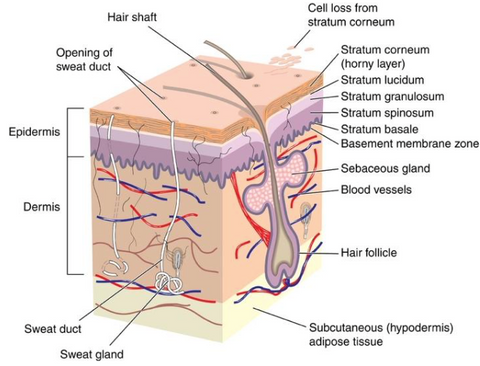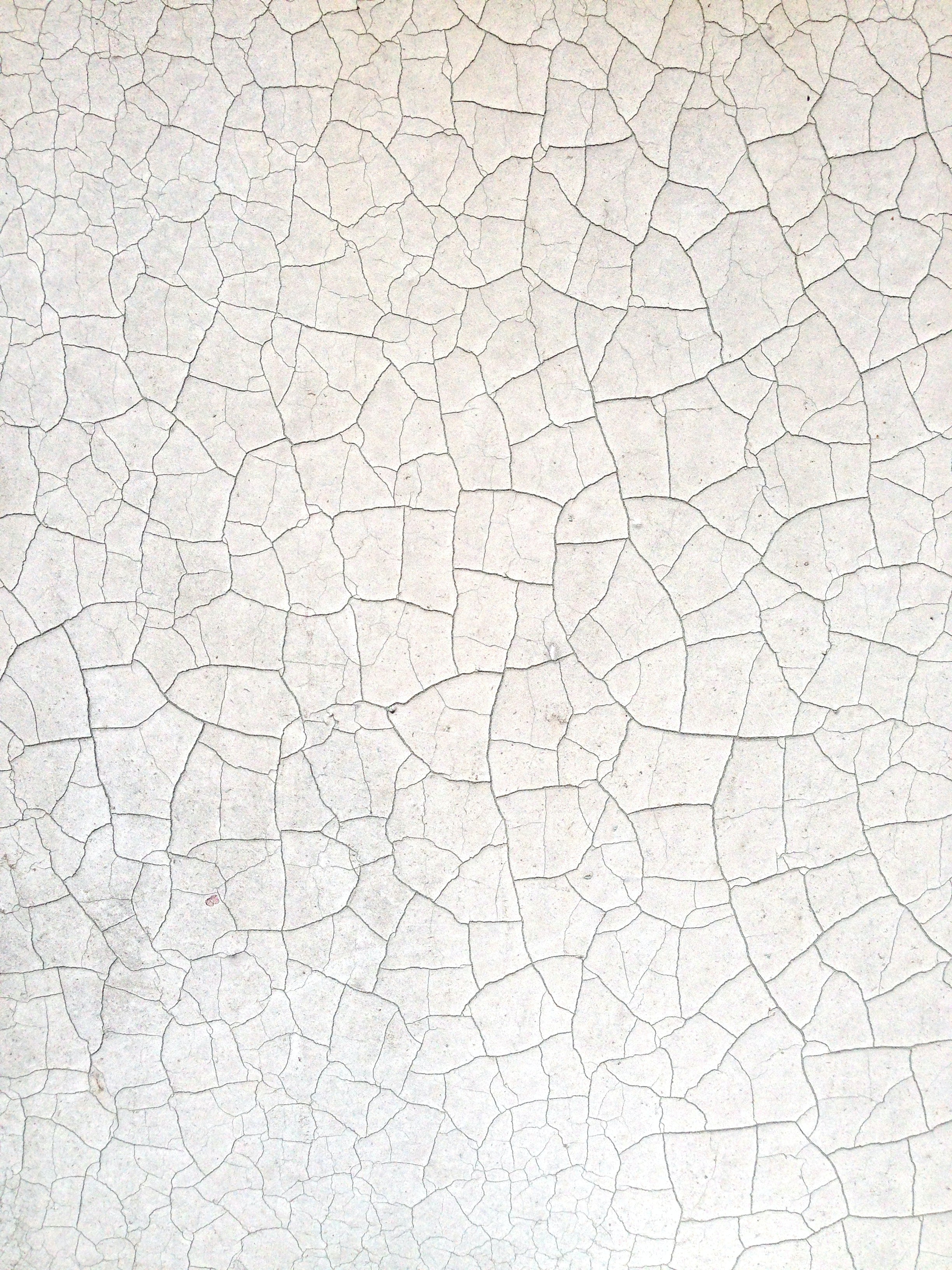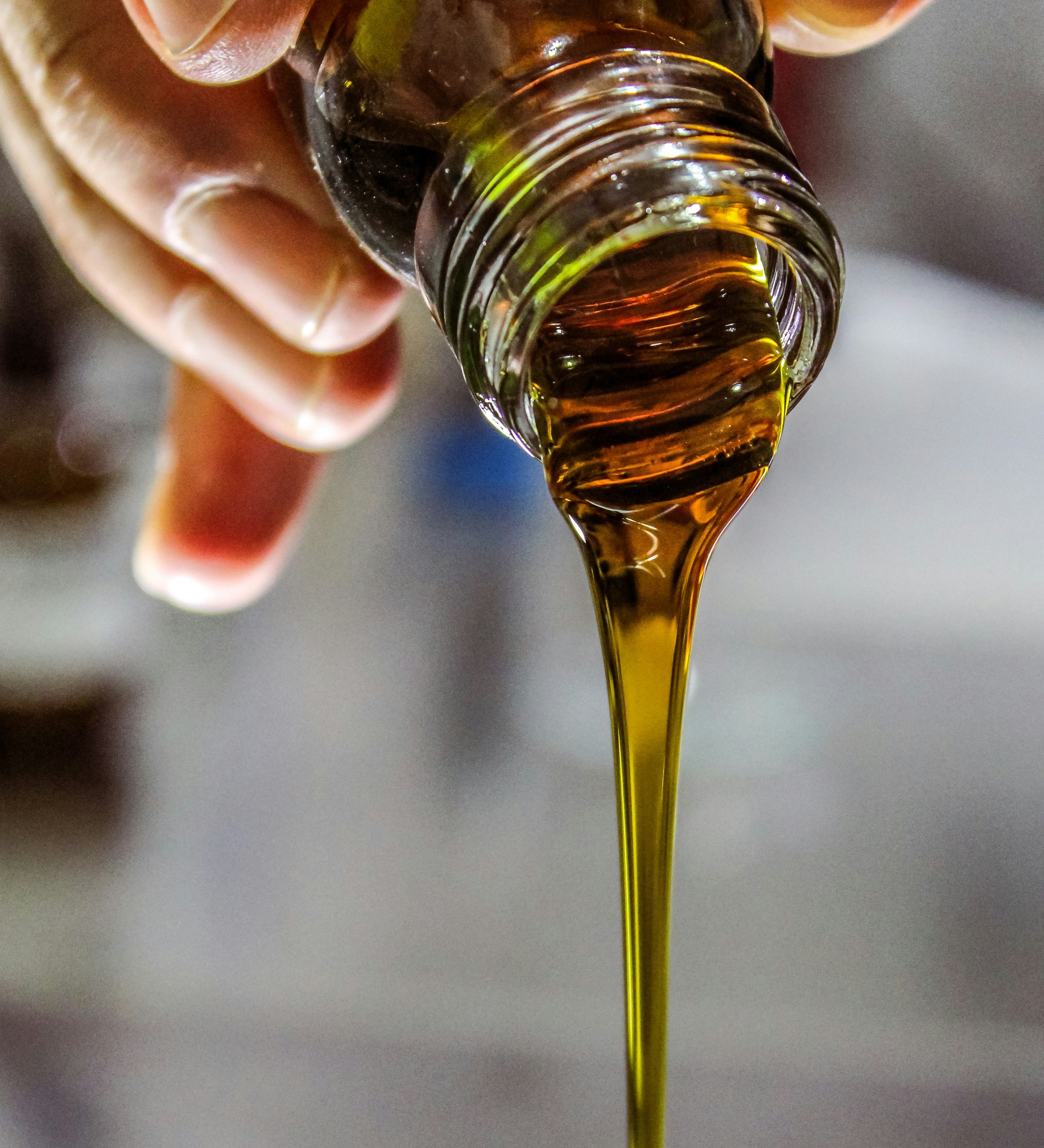The use of moisturising and hydrating ingredients goes back thousands of years, with skin care products being developed by ancient Egyptians around 3,000 BC.
Most use these terms interchangeably, but we should be a bit less flippant and recognise that these refer to critical components of skin care to improve skin hydration, that are complimentary yet distinct.
What does a cross-section of our skin look like?
Let’s start with definitions and a to help, the illustration below shows a cross section of our skin.

Moisturiser: Strengthening the Skin Barrier
A moisturiser helps the skin’s lipid barrier to work effectively as a protective layer to prevent water loss through the epidermal layer, your top skin layer. This function is scientifically known as preventing transepidermal water loss (TEWL). In other words, by replenishing the skin lipids, TEWL is diminished, which in turn improves the barrier function of the skin.
However, this barrier is not absolute because the skin cells must breathe. We refer to our skin as a semi-permeable barrier.
What ingredients are used in moisturisers?
Moisturisers are a mixture of ingredients which make up creams, body butters and lotions. Water-rich gels and serum products can also be considered moisturisers.
The moisturising ingredients are designed to soften and smooth the skin, making it supple to the touch.
Examples of moisturising ingredients include:
- Jojoba oil/wax and Macadamia oil/wax– both with exceptional skin bio-compatibility that mimics the properties of our skin lipid barrier.
- Rosehip oil – rich in essential fatty acids and antioxidant properties.
- Emulsifying waxes such us Cetearyl alcohol, (not al alcohol at all, but rather a was with a backbone that resembles that of alcohol), Cetearyl glucoside, Sorbitan olivate.
See more about Our Ingredients – Azurlis™ and how vegetable oils (generally great moisturising ingredients) align with our core values of Sustainability & Natural Skin Care – Buy Only What You Need – Azurlis™.
The combination of these three oils provides a powerful blend of antioxidants and essential fatty acids that help to nourish and protect the skin from environmental damage.
Hydrators: Replenishing Skin Water Content
A hydrator helps to replenish the stratum corneum’s (top, horny layer) water content. This is achieved through the use of hygroscopic (water-attracting) ingredients - humectants. These function by actively attracting more water to the skin while maintaining it within the skin to improve the overall moisture level.
Maintaining Skin Hydration
Hydration refers to the water percentage on the top layer of our skin – the Stratum corneum -.
This moisture is not evenly distributed, instead, a gradient develops from the Stratum corneum (outer), where less water is retained, to about 20 – 30% in contrast to the deepest epidermal layers that contain around 70% water.
When the outer layer contains less than 20 – 30% moisture, the skin becomes flaky, dry, dull and sometimes itchy. This is a clear sign that the skin barrier has been compromised.
How does water get to the skin?
Water gets to the skin through external availability, such as the use of humectants (a substance that draws water into the skin) and moisture in the air.
Examples of humectants include:
-
Glycerin:
A natural humectant derived from plants that is commonly used in skin care to attract and retain moisture. It attracts water from the environment and the deeper/basal layers of the skin to the surface (Stratum corneum) layer, thus improving overall hydration levels.
-
Hyaluronic Acid:
A superb humectant that can hold up to 500 – 1,000 times its weight in water. This is an outstanding ingredient to hydrate the skin and improve the overall hydration levels, which will help reduce the appearance of fine lines and wrinkles.
Internal Hydration: The Role of Lipid Barrier and Natural Moisturising Factor
Another way that the skin gets moisture is from within the body, which is fascinating!
The outer epidermal layer of your skin is called the Stratum corneum and is not just composed of “dead” cells (corneocytes), otherwise, your skin would be putrefying, and it would literally “stink”. Instead, this layer is responsible for overseeing the skin’s lipid barrier and its own natural moisturising factor (NMF).
But it gets better!
The lipid barrier and NMF are not one and the same.
The lipid barrier includes:
- Fatty acids
- Ceramides and cholesterol
The NMF contains humectants such as:
- Amino acids,
- Urea
- Lactate
- Mineral salts
- Organic acids.
Synergy of NMF and Lipid Barrier: Maintaining Skin Hydration and Preventing Water Loss
The NMF is the ultimate hygroscopic “agent” because it attracts water that remains in our skin. Yet, hyaluronic acid, however, is not a component of the NMF, instead, it lies in the dermis (the skin’s deepest layer).
The lipid barrier and NMF substances work together to maintain the skin’s hydration levels and prevent water loss. Clever, indeed!
So, in a nutshell, a moisturiser helps to prevent water loss, whereas a hydrating ingredient adds water to the skin.
Moisturising and hydrating are both absolutely essential to the maintenance of healthy skin and using emulsion-type moisturisers containing hydrating ingredients is a no-brainer for great skin that is properly hydrated.


